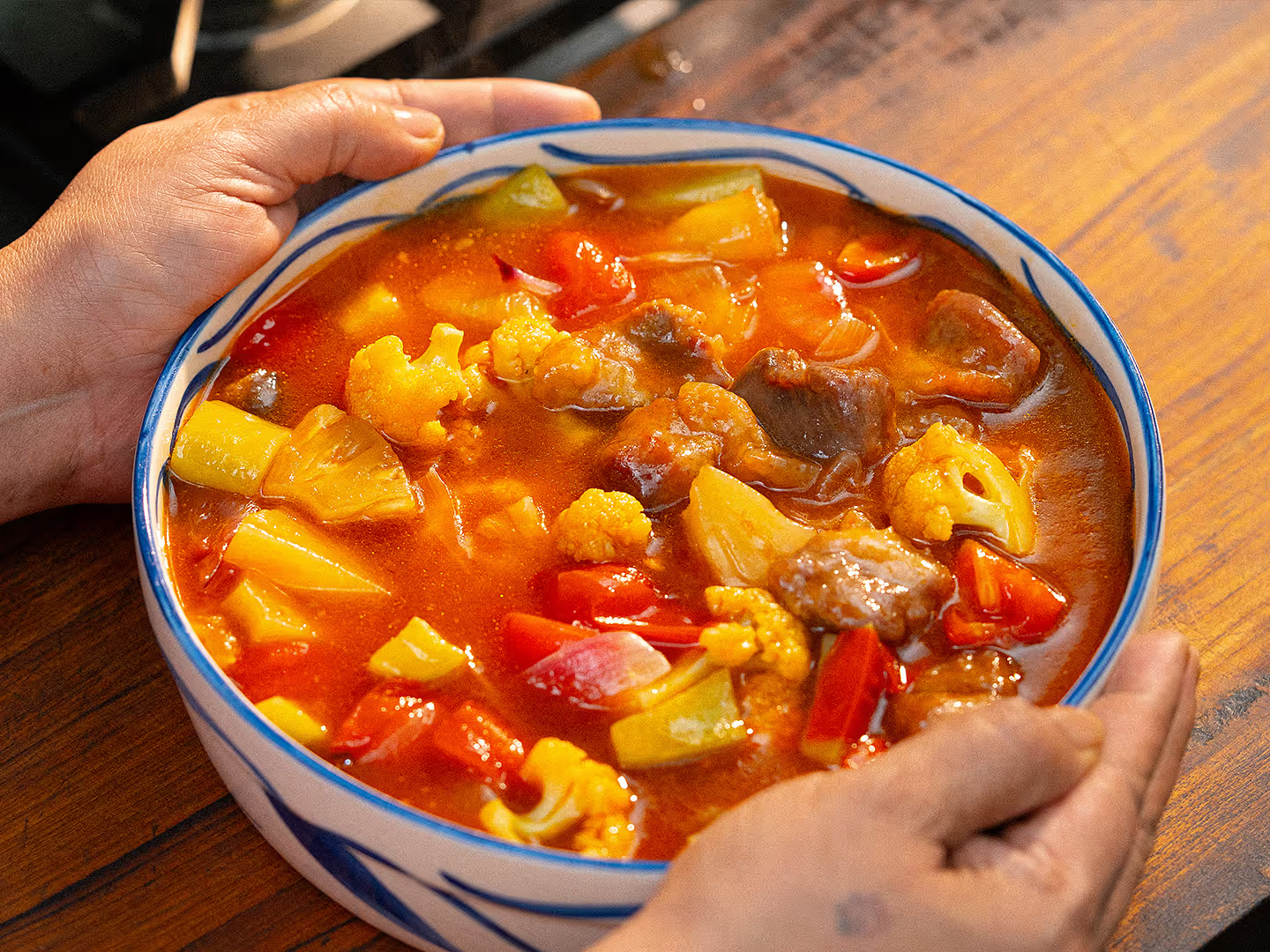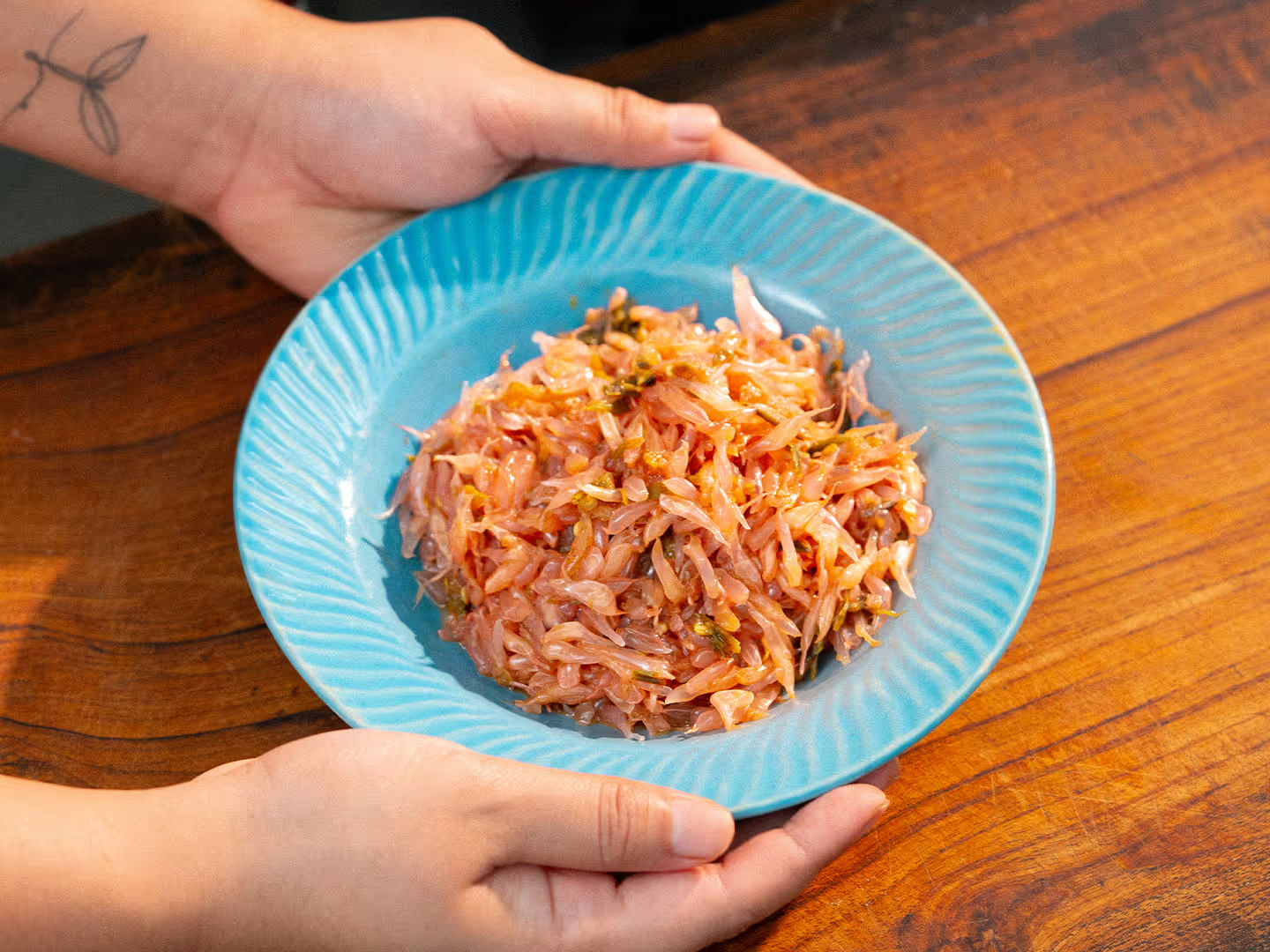Jolpai diye Chaltar Chutney
A seasonal chutney with elephant apple and Indian olives, made during autumn
- Cooking time40 mins
- Calories69kcal
This particular chutney is my grandmother Durga's recipe. She made it on the day of Lokkhi pujo in late October/early November. It uses two fruits that are in season now–unripe chalta (elephant apple) and jolpai (Indian olive). This chutney is a good example of a unique kind of Bengali chutney that use fragrant non-parboiled rice for flavour along with grated coconut for texture.
Chalta is a fruit indigenous to India and China with a very peculiar flavour and build. Its English name "elephant apple" apparently comes from the fact that elephants love chalta! Unripe chalta appear in the markets in Bengal in the beginning of October when they are used in sweet and sour chutneys, as well as for savoury preparations. Over the subsequent few months they ripen and become more fibrous and sweeter. They are then made into pickles!
Frequently Asked Questions
Books in this recipe
Ingredients
- 400 g chalta (elephant apple; 250 g once peeled and prepped)
- 100 g jolpai (Indian olives)
- 10 g vegetable oil
- 1 dried red chilli
- 1 tsp mustard seeds
- 6 g salt
- 125 g sugar
- 600 ml water
- 15 g gobindobhog/radhatilok rice (soaked 1 hour)
- 30 g freshly grated coconut
Method
- Soak the rice in water, about 1 hour.
- Quarter the chalta and remove the core. Separate all the layers and peel them along the direction paralel to the fibers. Divide into 3mm-thick cross-sections.
- Wash chalta using some salt as abrasive.
- Cut the jolpai from both sides of the pit.
- Boil the chalta with 600 ml water and 6 g salt, for about 6 mins. Strain immediately, reserving the water for later use.
- Boil jolpai too, separately, for about 4 minutes. Strain and set aside.
- Heat vegetable oil. Temper it with a dried red chilli and mustard seeds.
- Add the boiled chalta and jolpai, and fry for 3 mins.
- Add the water that was used to boil chalta (about 550 ml liquid in total). You can taste the water, and if you think it's too sour, you can replace some of the liquid with plain water.
- Add sugar and boil until the chalta has softened and chutney is syrupy.
- Grind the soaked gobindobhog rice and coconut into a fine paste. Add it to the pan.
- Allow everything to bubble another couple of minutes, and turn off the heat while the chutney is still runny—it'll thicken as it cools.































